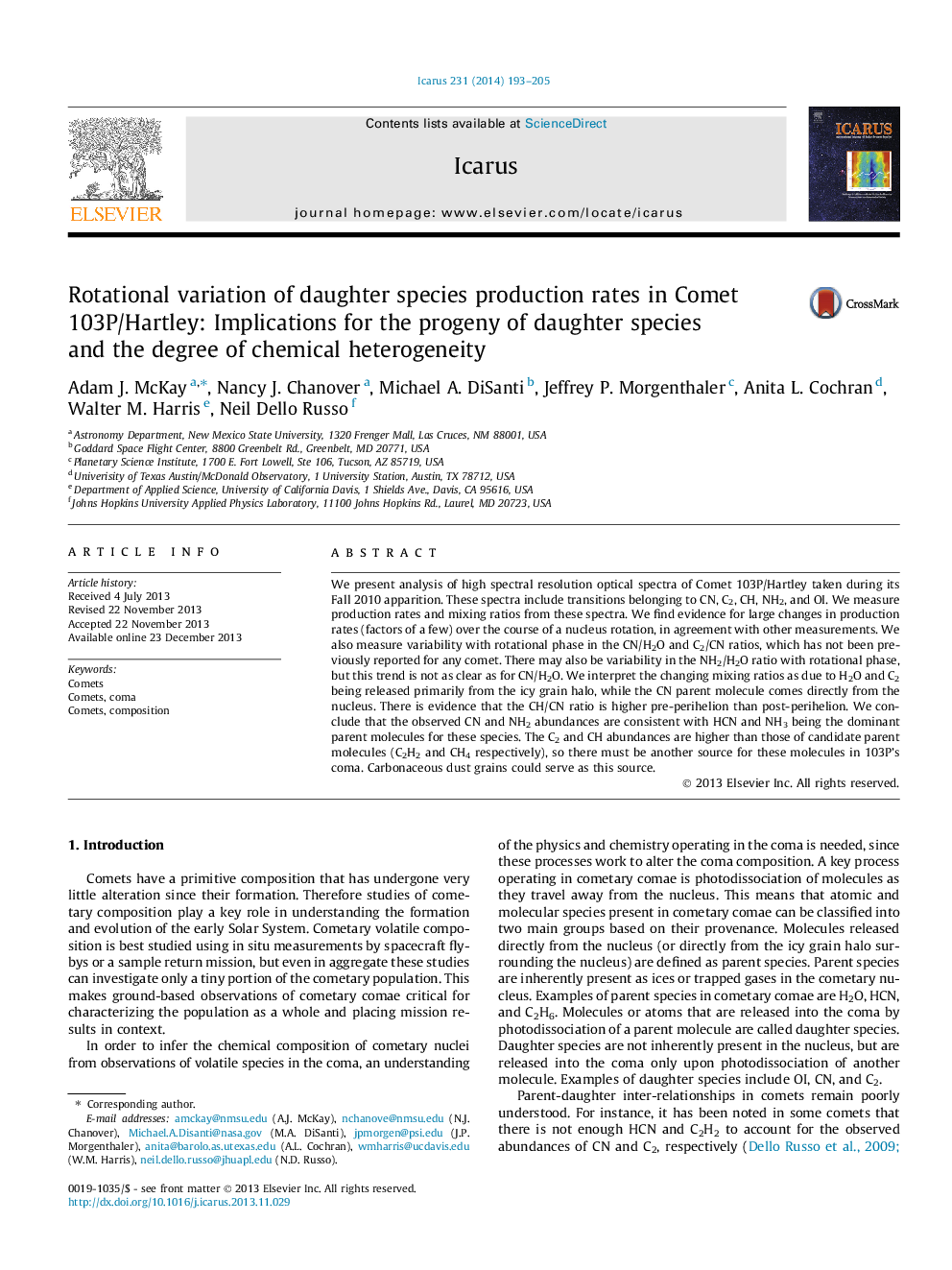| Article ID | Journal | Published Year | Pages | File Type |
|---|---|---|---|---|
| 8138579 | Icarus | 2014 | 13 Pages |
Abstract
We present analysis of high spectral resolution optical spectra of Comet 103P/Hartley taken during its Fall 2010 apparition. These spectra include transitions belonging to CN, C2, CH, NH2, and OI. We measure production rates and mixing ratios from these spectra. We find evidence for large changes in production rates (factors of a few) over the course of a nucleus rotation, in agreement with other measurements. We also measure variability with rotational phase in the CN/H2O and C2/CN ratios, which has not been previously reported for any comet. There may also be variability in the NH2/H2O ratio with rotational phase, but this trend is not as clear as for CN/H2O. We interpret the changing mixing ratios as due to H2O and C2 being released primarily from the icy grain halo, while the CN parent molecule comes directly from the nucleus. There is evidence that the CH/CN ratio is higher pre-perihelion than post-perihelion. We conclude that the observed CN and NH2 abundances are consistent with HCN and NH3 being the dominant parent molecules for these species. The C2 and CH abundances are higher than those of candidate parent molecules (C2H2 and CH4 respectively), so there must be another source for these molecules in 103P's coma. Carbonaceous dust grains could serve as this source.
Related Topics
Physical Sciences and Engineering
Earth and Planetary Sciences
Space and Planetary Science
Authors
Adam J. McKay, Nancy J. Chanover, Michael A. DiSanti, Jeffrey P. Morgenthaler, Anita L. Cochran, Walter M. Harris, Neil Dello Russo,
